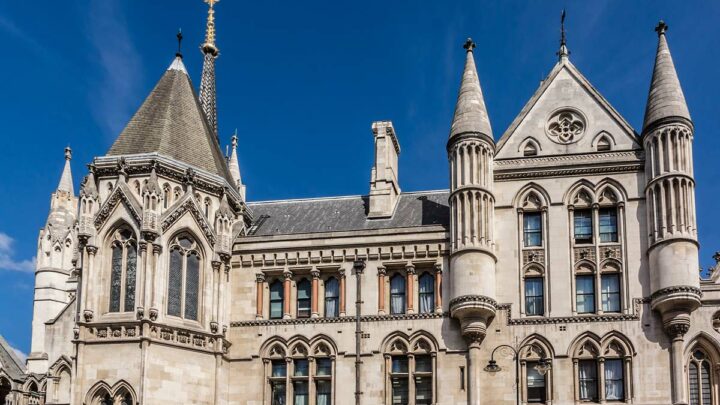
Searching for the best examples of London’s Gothic architecture? Here’s where to find them.
When you think of the Gothic era, we bet your mind immediately jumps to the otherworldly Victorian authors such as Edgar Allen Poe, Mary Shelley and Bram Stoker, dark misty evenings filled with high tension, and shadowy figures.
In fact, London is full of reminders of its Gothic history, with several stunning buildings from the mid-18th Century to the turn of the 20th Century reminding us of London’s mysterious past.
Ready to explore? Make sure your oil lamp is full and pull your cloak over your head as we tiptoe through the best Gothic architecture London offers.
Wait… What is Gothic Architecture?
Let’s nerd out for a moment. The Gothic movement is often referred to as Victorian or neo-Gothic and began in the late 1740s.
Designed to combine the period’s neoclassical styles with the medieval Gothic stylings of previous centuries, Gothic architecture is easily identifiable with its finials, lancet windows, moulds and decorative patterns.
In other words… If you can imagine it as an evil lair, chances are it has Gothic influence.
By the mid-19th Century, the Gothic movement was the predominant architectural style in Western Europe, only to fall from grace in the latter part of the century.
The introduction of iron and steel as construction materials gave architects of the time scope to expand the movement away from its medieval roots, providing us with some of the grand buildings that stand today as a testament to London’s beautifully eerie past.
Best Gothic Architecture in London
St Pancras Railway Station & Hotel
St Pancras
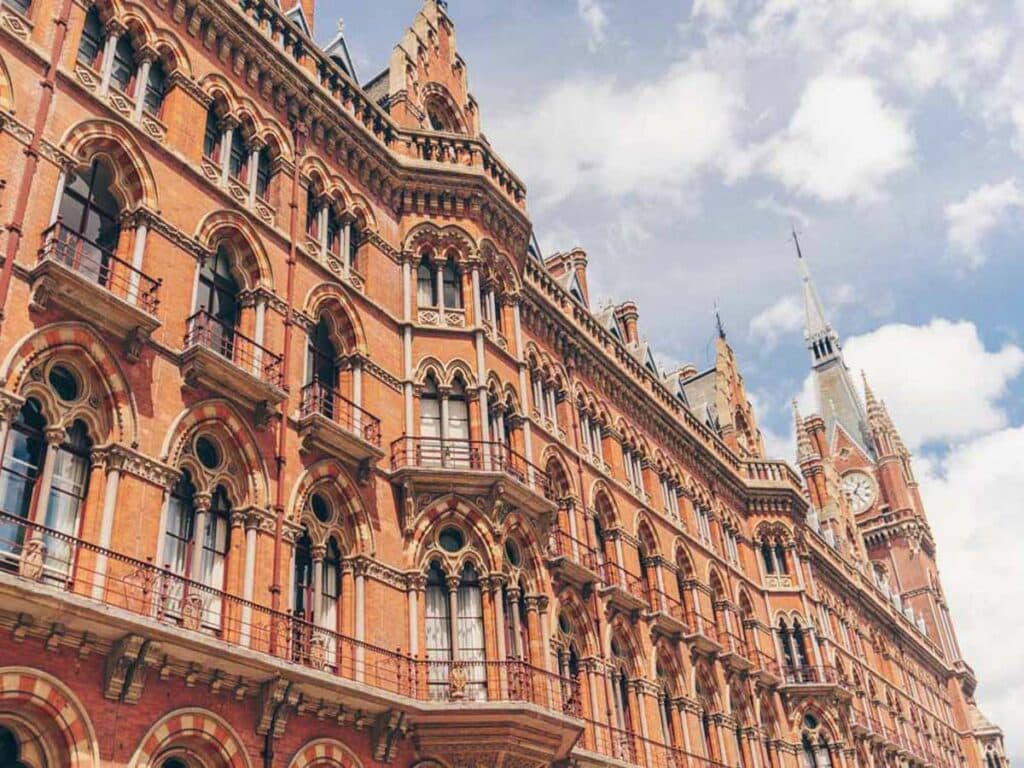
The enormous red-brick façade of St Pancras Station is a familiar sight that has greeted travellers from the Midlands since the mid-19th Century. And, in more recent times, from continental Europe.
It was George Gilbert Scott who designed the frontage that would eventually become a hotel. Calling in influences from Italian Gothic styles, Gilbert Scott also used his previous works at Kelham Hall (1857) as a basis for the hotel, albeit on a much grander scale.
In 2011, the hotel reopened after a grand renovation in time for the 2012 London Olympics. The internal and external parts of the building had a substantial facelift yet remained sympathetic to its revival-Gothic origins.
Strawberry Hill House
Twickenham
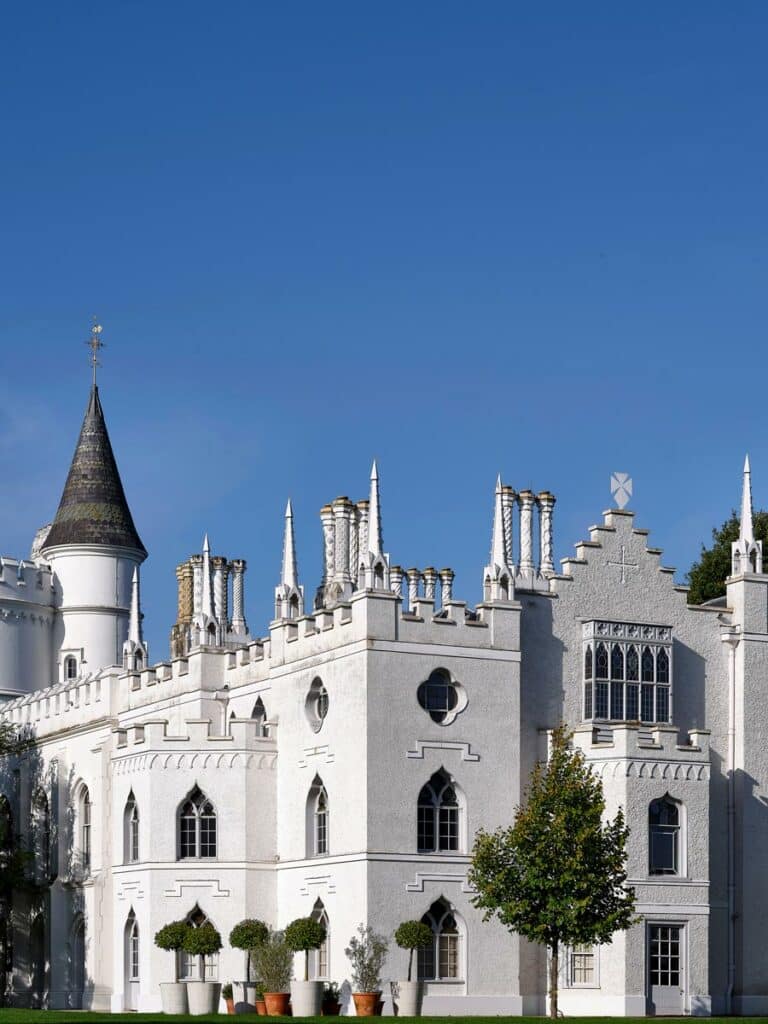
Strawberry Hill House might just be our favourite example of Gothic architecture in London. is a stunning chalk-white Gothic villa built in stages over three decades, beginning in 1749 by Whig politician and renowned writer Horace Walpole. In fact, it’s the most complete example of early neo-Gothic buildings in London.
As each iteration of the building progressed, Walpole added more Gothic features such as battlements and towers to create a feeling of gloom to combine with the warmth inside, known as “gloomth”. Walpole was a strong collector of antiques, which, combined with the beautiful Robert Adam fireplace, gave the interior a solid personal feel.
But one impressive architectural style wasn’t enough for Walpole. The beautiful gardens included a large Rococo-style seashell seat recreated during the Villa’s 2012 facelift, one of the many stylistic curiosities at this stunning early-Gothic period palace.
The house and gardens are open to the public every Sunday to Wednesday, while the Garden and Cafe are also open on Thursdays.
Palace of Westminster
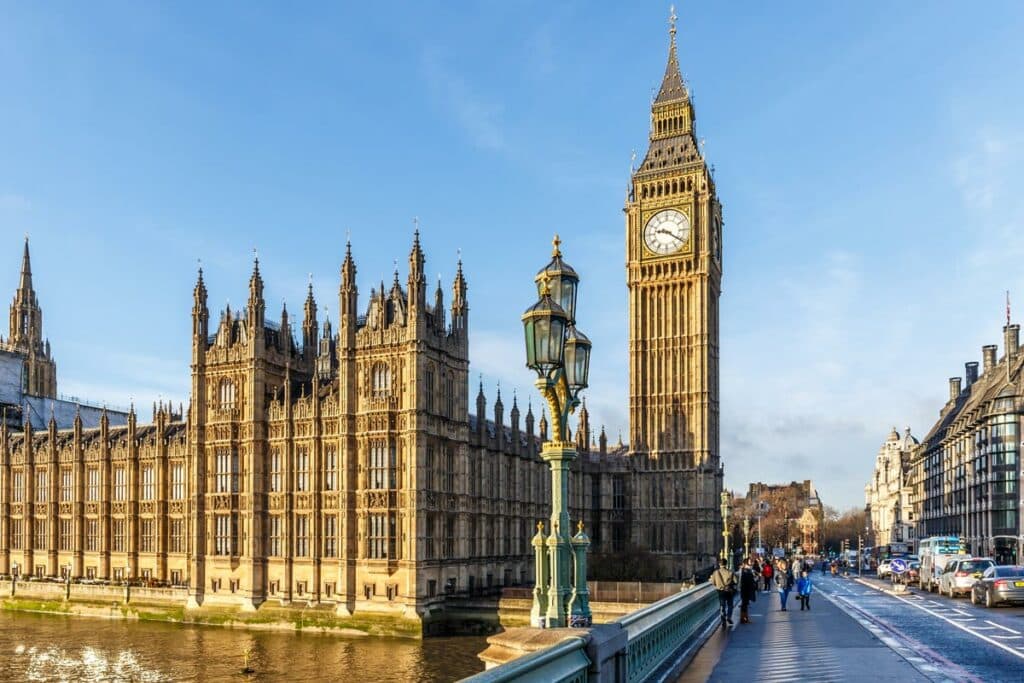
Better known as the Houses of Parliament, the Palace of Westminster, in its current guise, was built after a fire destroyed the original building in 1834.
Designed by Charles Barry and completed in the 1870s, the palace has been home to British democracy again since 1847, when the Lords Chamber was reopened and 1852, when the Commons Chamber opened.
The palace’s exterior, with its finial towers, Gothic windows and exquisite levels of detail, is one of the most recognisable examples of revival-Gothic architecture in London – and worldwide.
It’s also home to arguably the most recognisable set of chimes in the world, with Big Ben letting Londoners know the time inside the palace’s famous clock tower.
For those wanting to explore the corridors of British democracy, we’ve written a complete guide to visiting the Palace of Westminster.
South London Theatre
West Norwood
Based in a disused fire station, the South London Theatre has been open since 1967 in a quiet area of South East London, making it one of London’s hidden Gothic gems.
The building was built in 1881 and is one of the few remaining examples of fire stations that could house horse-drawn tenders. The lookout tower and original doors remain in place.
From 1917, after the introduction of motorised fire engines, which were too big for the building, it was used as a hall for the neighbouring St Luke’s Church.
In 1967 it was converted into a theatre by Owen Luder and has undergone several renovations. However, the exterior of the building remains faithful to its neo-Gothic origins and is a more understated example of the period’s architectural style.
There are regular public performances of well-known shows. In addition, anyone harbouring theatrical dreams will love their monthly open evening, which includes behind-the-scenes tours and information on how to get involved.
Albert Memorial
Kensington Gardens
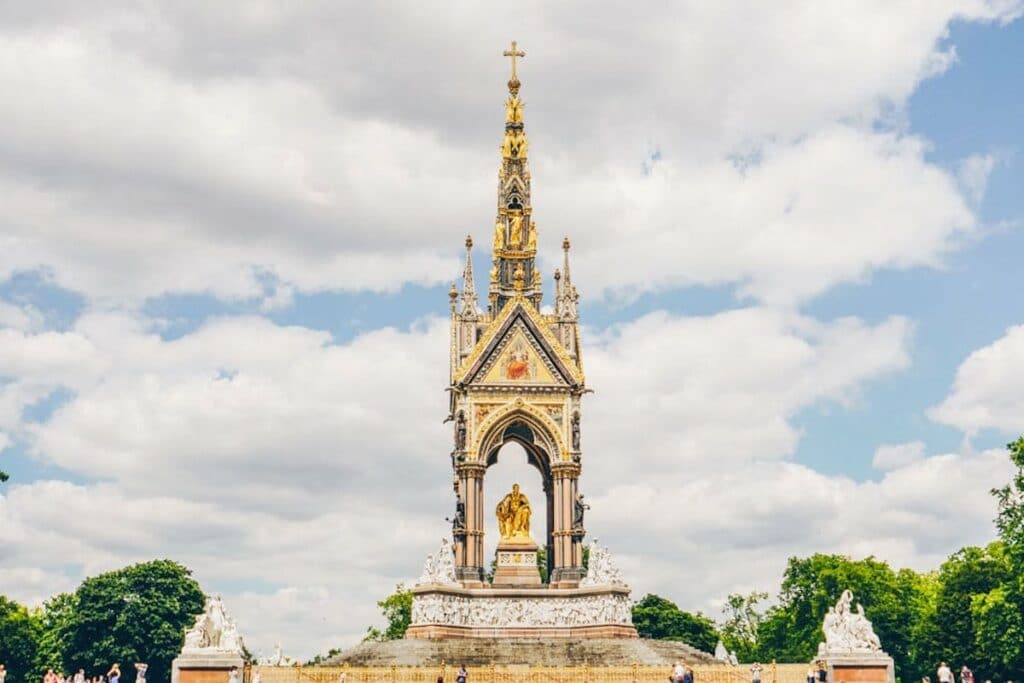
The Albert Memorial is one of London’s most intricate Gothic-era monuments. Commissioned by Queen Victoria, it stands in memory of her beloved husband, Prince Albert, following his death from typhoid in 1861.
Designed by George Gilbert Scott, the memorial was unveiled in 1872 and is one of the best examples of medieval influences on Gothic revival architecture.
Gilbert Scott used the 13th Century Eleanor Cross style as a basis for his design, creating one of the most beautiful and ornate Victorian-era Gothic pieces of architecture anywhere.
The memorial depicts the Prince Consort holding a catalogue of the Great Exhibition, held in neighbouring Hyde Park in 1851, which he helped to organise. The design also encapsulates Albert’s love of the arts, with 187 individually carved figures within the memorial.
Royal Courts of Justice
The Strand
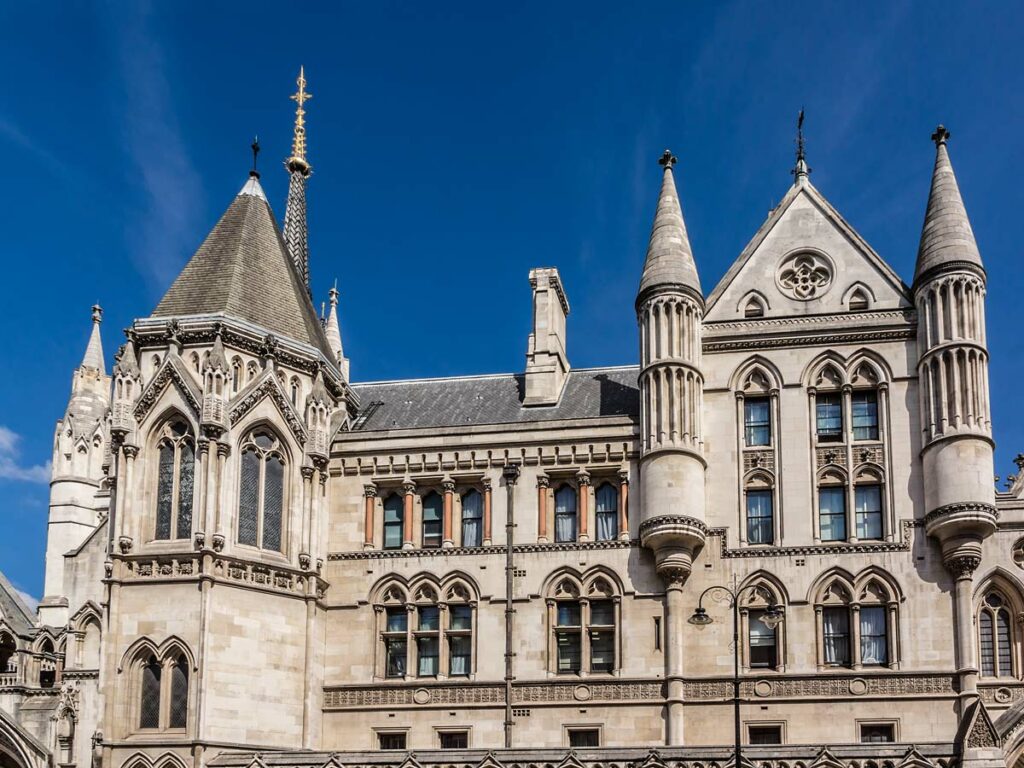
A familiar sight on news reports following the end of a high-profile legal case, the Royal Courts of Justice on The Strand is a sprawling behemoth that is one of London’s grandest examples of Gothic revival architecture.
Designed by George Edmund Street, who sadly never lived to see his vision become a reality, it resembles the Palace of Westminster in style but built in grey stone. The Courts were created in the latter years of the Victorian-Gothic era and opened by Queen Victoria in 1882.
The Grade-I listed building is open for regular weekly tours, which you can book in advance via the Court’s main website. There’s even the opportunity to view a court case in session on some occasions.
Maughan Library
Kings College
Although the Maughan Library is mainly accessible to Kings College Students, it remains one of London’s neo-Gothic architectural gems, once home to the Public Record Office.
Designed by Sir James Pennethorne and constructed in 1851, this Grade II listed building is one of the finest examples of the period.
Highlights include stunning stained glass windows and a dodecagonal reading room inspired by the British Museum. Meanwhile, the former medieval chapel is now an exhibition space.
Better yet, the public can access exhibitions, allowing them the opportunity to take in the splendour and triumphant Gothic stylings of this hidden architectural treasure. Pack your camera, this one’s a beauty.
Practical Tips for Exploring the Best Gothic Architecture in London
- The best way of exploring London is above ground, either on foot, by bike or by bus. By knowing what to look for, you’ll soon find examples of Gothic architecture dotted all around the city.
- From the sprawling palaces of Central London to the spectral designs of some of outer London’s final resting places, the uncanny, unique appeal of neo-Gothic architecture quickly becomes apparent.
- One of the most exciting ways to explore London’s ethereal Gothic underbelly is to join one of the many guided haunted bus or walking tours available in the city after dark.


